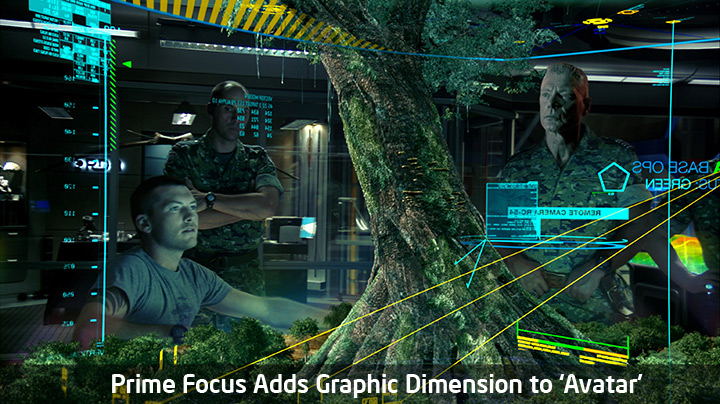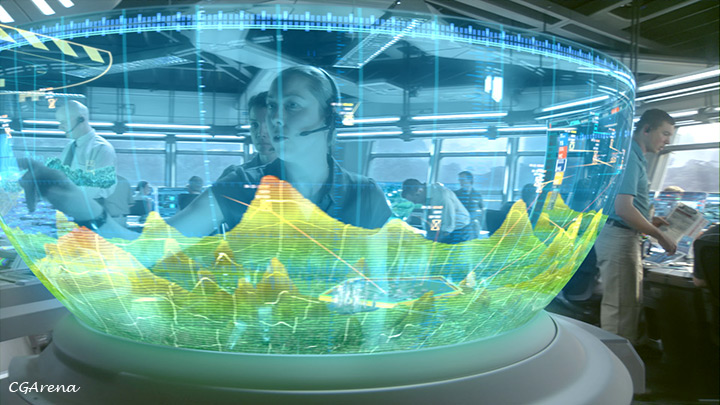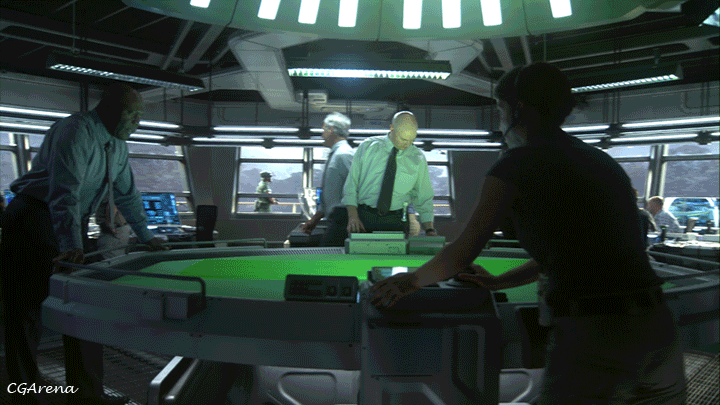Prime Focus Adds Graphic Dimension to ‘Avatar’

avatar graphic dimension
Prime Focus, a global visual entertainment services group, has contributed a number of shots to James Cameron’s stereoscopic 3D feature film “Avatar.” The movie, which stars Zoe Saldana, Sam Worthington and Sigourney Weaver, hits theaters Dec. 18 and features numerous stereographic and “Holotable” displays, animated graphics, immersive environments and other visual effects created by Prime Focus.
A team of approximately 90 was spread across Prime Focus’ Los Angeles, Vancouver and Winnipeg facilities, with President & Senior Visual Effects Supervisor Chris Bond and Visual Effects Producer Chris Del Conte driving the project out of the LA office. Graphics Supervisor Neil Huxley art directed and oversaw the design of the motion graphics elements. The bulk of Prime Focus’ work was done for the film’s Bio lab and Ops Center, the bustling hub for military operations and one of the key environments in the film.
“Our experience working with stereoscopic 3D material, both on the movie ‘Journey to the Center of the Earth 3D’ and through our proprietary View-D technology, more than prepared us for ‘Avatar,’” said Bond. “Having the resources of our talented teams across Winnipeg and Vancouver at our disposal and set up for remote collaboration with our Los Angeles crew also meant we could ramp up at a moment’s notice when we were awarded additional shots.”
Prime Focus designed displays for the Op Center’s Holotable over which the film's main characters discuss their missions and plans to mine a valuable mineral found on the planet Pandora. In one key scene, the film’s protagonist Jake Sully (Sam Worthington) and Col. Quaritch (Stephen Lang) bring up a three-dimensional hologram of the “Home Tree,” where the Navi, Pandora’s indigenous population, live.

avatar2
Using the original live-action plate of a table with a greenscreen across the top, Prime Focus modeled the hardware that went inside the table, the projector beams, and added graphics projected above the table of the terrain, including the Home Tree. These graphics were designed in 2D in Adobe Illustrator, animated in Adobe After Effects, placed on cards in 3D and rendered in Autodesk 3ds Max. Prime Focus Software’s Krakatoa particle system was used for the 3D terrain, which gave the images a scan-lined LIDAR-like quality, as if a satellite roving the planet’s atmosphere captured the footage.

To make the Ops Center feel alive and bustling with activity, Prime Focus also designed interactive stereographic displays for dozens of screens, so every monitor screen had a sense of movement and depth. Each screen was composed of four-to-eight layers, rendered in different passes and composited together.